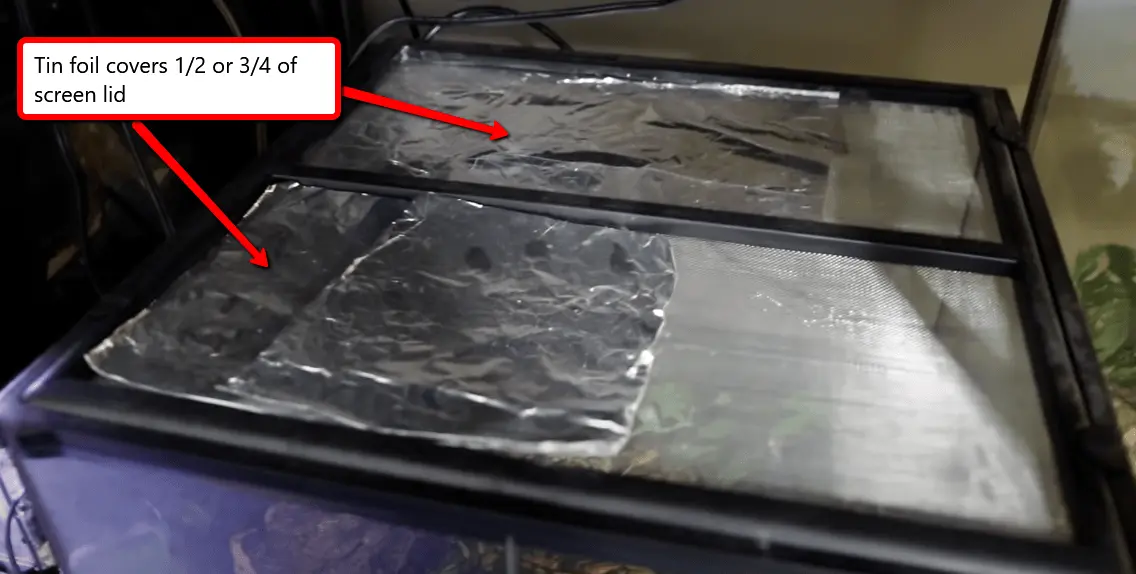If you live in a very low humidity area, then you may find yourself struggling to keep the humidity levels in your leopard gecko tank at optimum. Low humidity can be a serious health issue for your gecko.
Continue reading to get some useful tips to quickly increase humidity levels to ensure that your leopard gecko remains comfortable and happy in their captive environment.
Ideal Humidity for Leopard Geckos
It’s very important to bear in mind that leopard geckos are desert animals. They come from a dry environment and therefore they need a low humidity of between 30% and 40%. This is the humidity that most people have in their homes.
What Happens When Humidity Levels in Leopard Gecko Tanks Are Too Low?
Risk of Infection Increases
Leopard geckos already enjoy a low humidity environment. However, if the humidity levels drop below 20%, your gecko’s risk of infection is increased. This can pose a serious health problem if the gecko is exposed to these low humidity levels for extended periods.
Stress
Your leopard gecko has specific living requirements and when the humidity gets too high or too low, your gecko will become stressed. A stressed gecko is at an increased risk of health issues.
Dehydration
The risk of dehydration is also increased when your gecko is exposed to low humidity levels of below 20%. Dehydration can be very dangerous. That is why you want to ensure your gecko always has access to clean, fresh water.
Dysecdysis
Dysecdysis is a dry skin condition, which happens when a gecko or lizard has a problem shedding. This is often due to a lack of moisture in the enclosure.
This condition can also affect the leopard gecko’s vision. The dry patches are retained skin. When they be retained on the eye, your reptilian pet is going to struggle with vision.
In addition to this, if the skin doesn’t come off the tip of the tail or fingers, they can die and fall off due to the restriction in blood flow.
Simple Ways to Increase Humidity in Leopard Gecko Enclosure
1. Reduce Ventilation
Most store bought enclosures come with ample ventilation, which you have assumed is best for your reptile.
While your pet does need some airflow, reducing the ventilation can help to increase humidity in the enclosure effectively.
You can use foil to cover an area of the mesh screen top to maintain a higher humidity level.
Do not cover the entire screen, your gecko does still need fresh air, try covering one third of the screen to see if that makes a sizable difference in humidity levels.

2. Water Dish
There should be a water dish inside your leopard gecko enclosure at all times. Geckos need access to fresh, clean water.
In order to increase humidity levels effectively, you can invest in a bigger water dish. This will enable you to increase the amount of liquid inside the enclosure.
Alternatively, you can place the water dish on the warm side of the enclosure to improve evaporation rates and increase humidity levels effectively.
3. Humid Hide
Humid hides are essential to help your leopard gecko feel secure, get some privacy, and help with shedding.
A humid hide is placed on the warm side of the enclosure and is filled with good quality moisture holding substrate, such as sphagnum moss.
The humid hide can also help to improve humidity levels inside the enclosure, reducing the risk of your humidity levels dropping too low.
4. Misting
You should mist your leopard gecko enclosure once to twice a week, especially around the time when your gecko is getting ready to shed. Misting doesn’t mean soaking the tank but offering a gentle spray of freshwater, which can evaporate to boost humidity levels.
5. Substrate
Make sure you have a good quality substrate that retains moisture to help boost humidity levels and ensure your gecko remains happy and healthy. Compressed coconut fiber is one of the most reliable ways to boost humidity with a reduced risk of impaction.
Conclusion
It is imperative that you pay close attention to the temperature and humidity levels inside your leopard gecko enclosure, keeping them at optimum to ensure that your pet remains happy and healthy.
A good quality hygrometer with probe is essential. Note, do not use the probe on a surface, but rather measure the humidity level in the air.